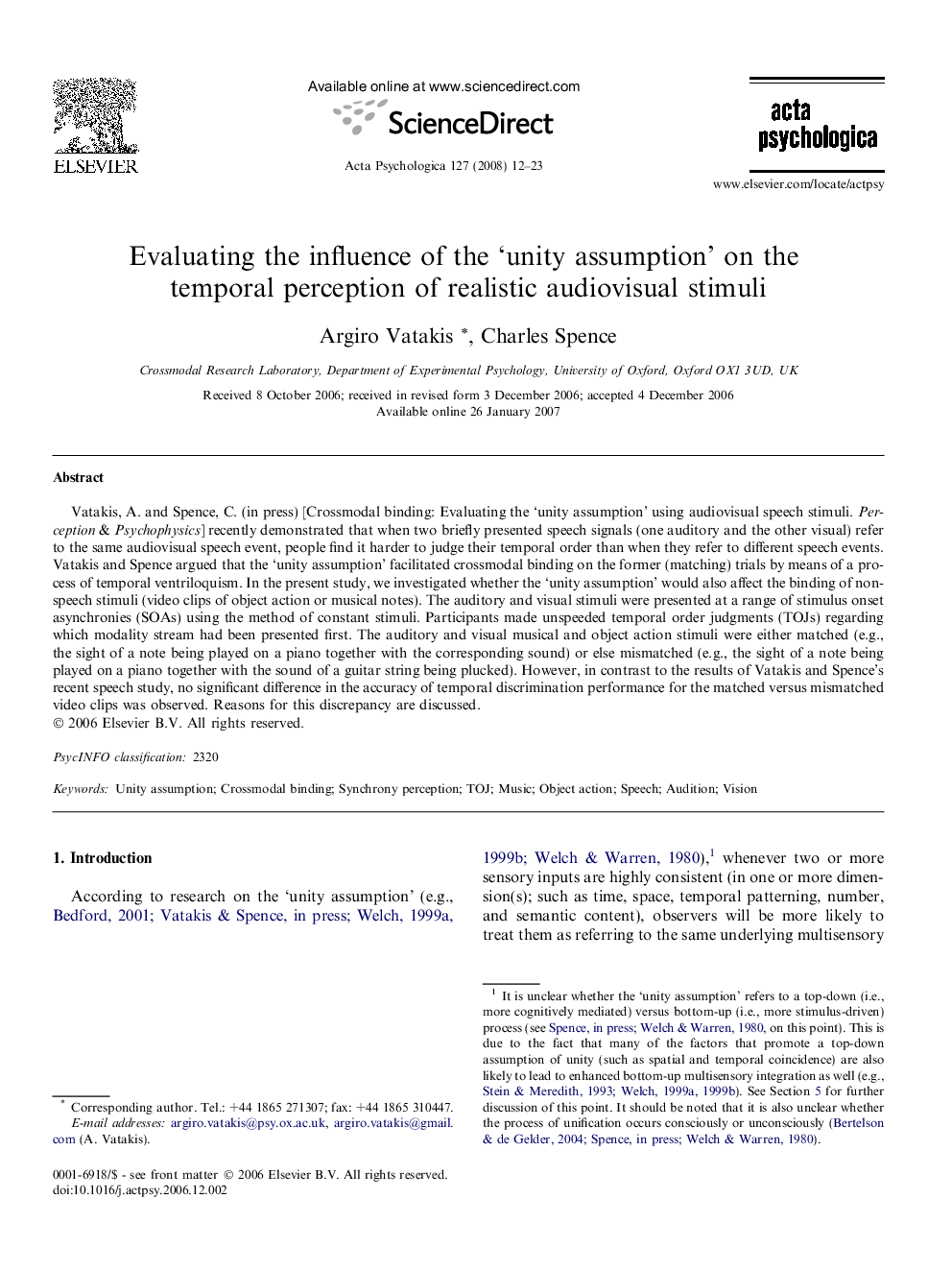| Article ID | Journal | Published Year | Pages | File Type |
|---|---|---|---|---|
| 920543 | Acta Psychologica | 2008 | 12 Pages |
Vatakis, A. and Spence, C. (in press) [Crossmodal binding: Evaluating the ‘unity assumption’ using audiovisual speech stimuli. Perception &Psychophysics] recently demonstrated that when two briefly presented speech signals (one auditory and the other visual) refer to the same audiovisual speech event, people find it harder to judge their temporal order than when they refer to different speech events. Vatakis and Spence argued that the ‘unity assumption’ facilitated crossmodal binding on the former (matching) trials by means of a process of temporal ventriloquism. In the present study, we investigated whether the ‘unity assumption’ would also affect the binding of non-speech stimuli (video clips of object action or musical notes). The auditory and visual stimuli were presented at a range of stimulus onset asynchronies (SOAs) using the method of constant stimuli. Participants made unspeeded temporal order judgments (TOJs) regarding which modality stream had been presented first. The auditory and visual musical and object action stimuli were either matched (e.g., the sight of a note being played on a piano together with the corresponding sound) or else mismatched (e.g., the sight of a note being played on a piano together with the sound of a guitar string being plucked). However, in contrast to the results of Vatakis and Spence’s recent speech study, no significant difference in the accuracy of temporal discrimination performance for the matched versus mismatched video clips was observed. Reasons for this discrepancy are discussed.
